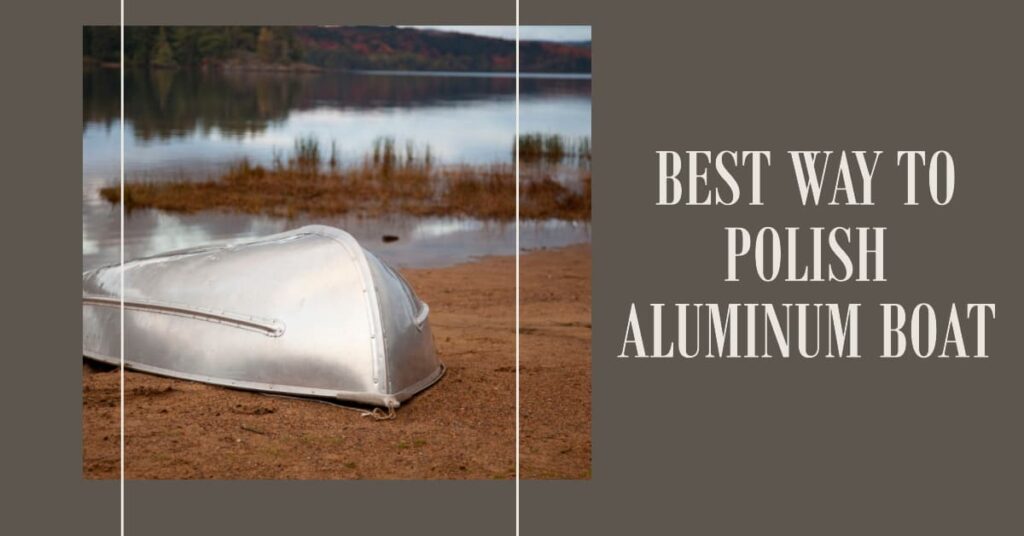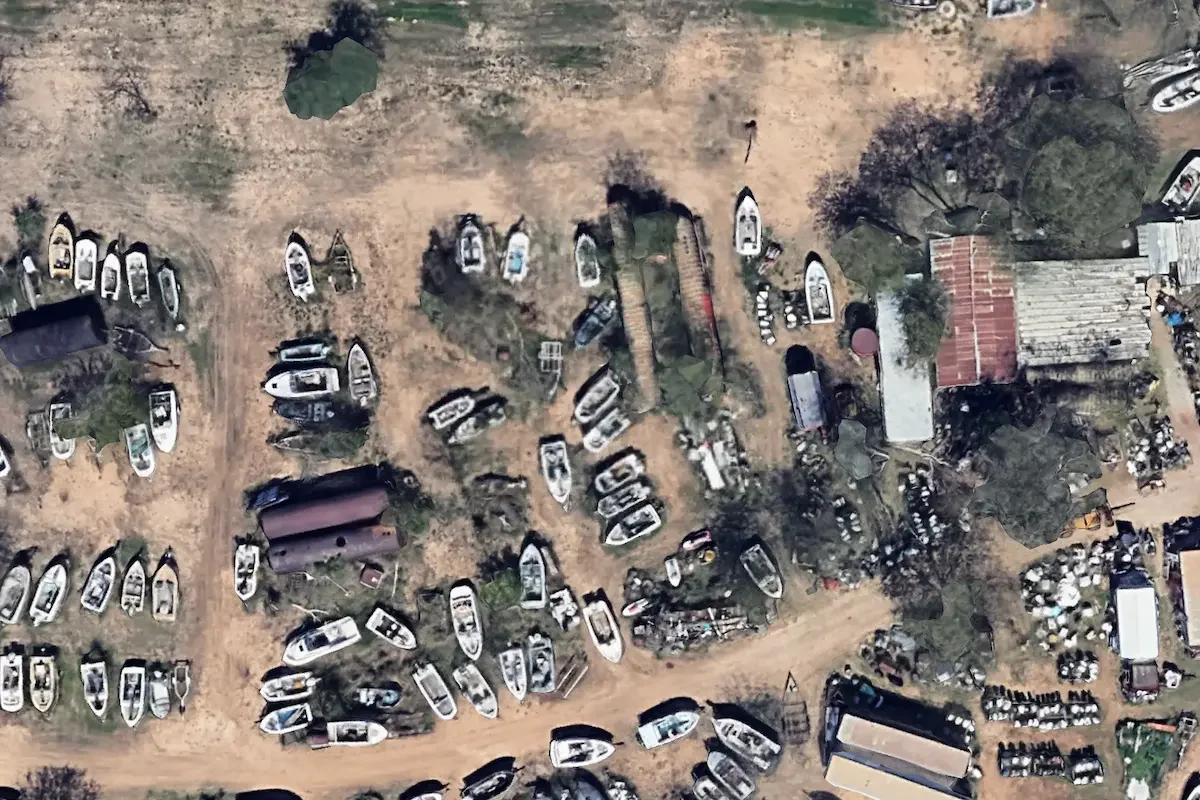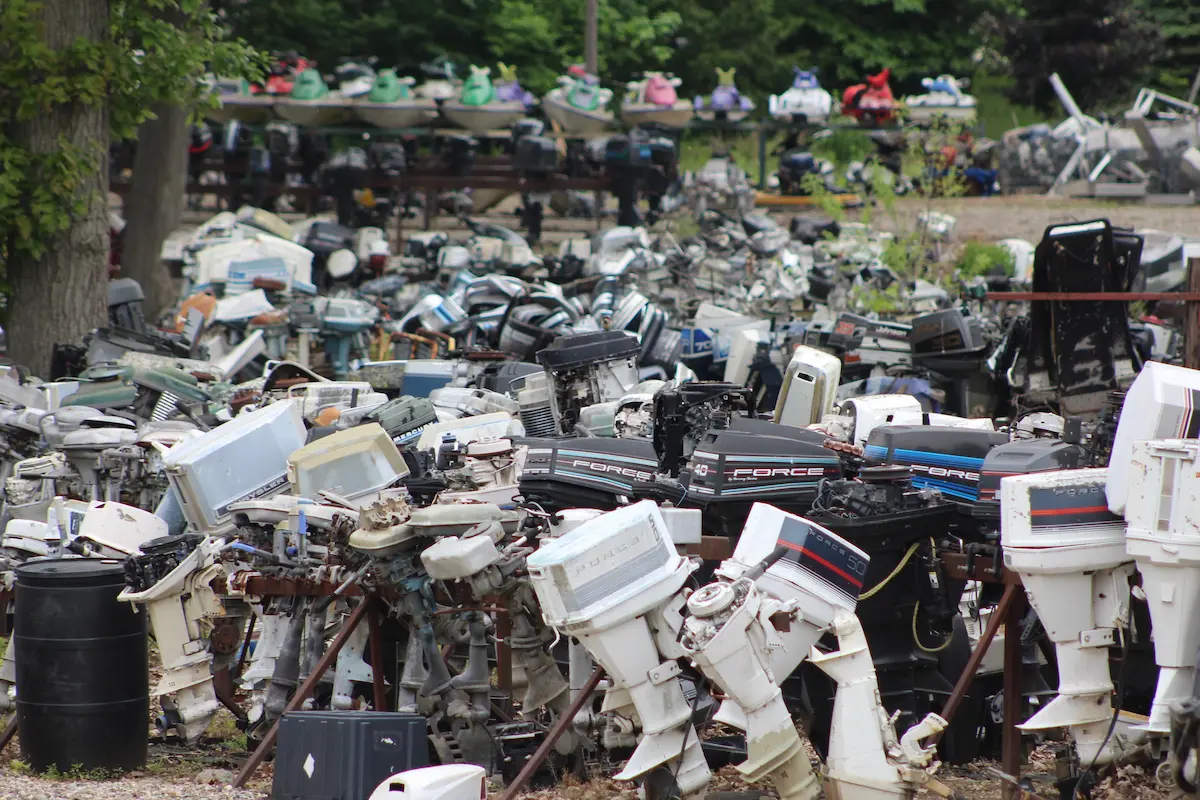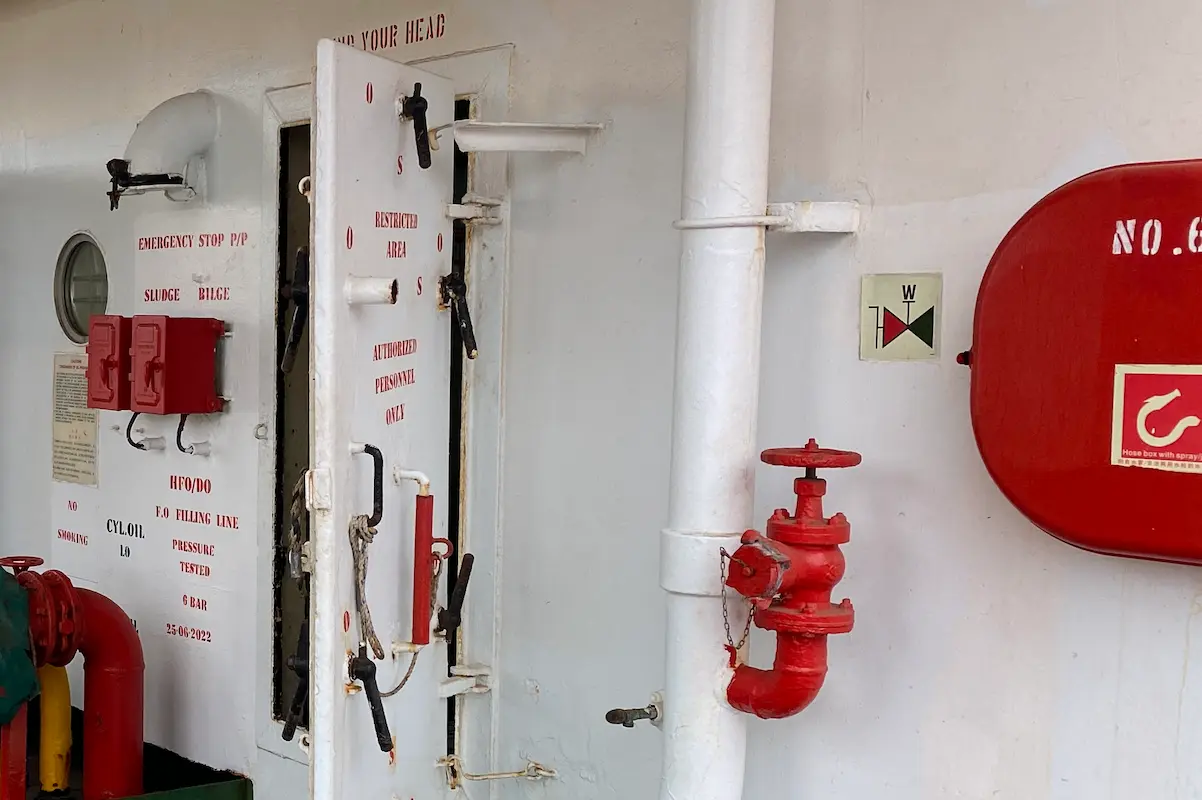Polishing an aluminum pontoon boat is a great way to keep it looking its best and protect it from the elements. Polishing can help to remove oxidation, scratches, and other imperfections, leaving the surface looking shiny and new.
However, with so many different methods and products available, it can be difficult to know where to start and what is actually the best way to polish aluminum. When it comes to polishing an aluminum surface, there are a few key factors to consider.

The first is the type of aluminum being polished, as different alloys and finishes may require different approaches. The second is the condition of the surface, as heavily oxidized or damaged aluminum may require more aggressive polishing methods.
Finally, the desired level of shine or finish will also play a role in determining the best approach. By taking these factors into account, it is possible to find the best way to polish an aluminum pontoon boat or other aluminum surface which are quite often used as boat building material.
Cleaning Aluminum Surfaces
Cleaning aluminum surfaces is an important part of maintaining their appearance and performance. Whether it’s a pontoon boat, aluminum wheels, or other boat parts, proper cleaning can help restore their value and keep them looking brand new.
Washing and Rinsing
The first step in cleaning aluminum surfaces is to wash and rinse the area thoroughly. Boat owners can use a hose or pressure washer to remove any loose dirt or debris. It is important to avoid using hot water, as it can cause the aluminum to warp or bend.
Removing Dirt and Grime
To remove dirt and grime, boat owners can use an aluminum cleaner or a low-micron cleaner. These cleaners are specially designed to clean aluminum surfaces without damaging them. They can be applied with a sprayer or a cloth and should be left on for a few minutes before rinsing off.
Removing Oxidation and Discoloration
Over time, aluminum surfaces can become discolored or oxidized, which can affect their appearance and performance. To remove oxidation and discoloration, boat owners can use a metal polish or a toilet bowl cleaner. These products can be applied with a cloth or a wool pad and should be buffed until the surface has a mirror-like finish.
Inspecting for Delamination
Before polishing an aluminum boat, it is important to inspect the surface for any signs of delamination. Delamination occurs when the layers of aluminum separate, which can affect the durability and performance of the surface. If any delamination is found, it should be repaired before polishing.
In conclusion, cleaning aluminum surfaces is an important part of maintaining their appearance and value. By following the proper cleaning process and using the right products, boat owners can keep their aluminum surfaces looking brand new for years to come.
Polishing Aluminum Surfaces
Polishing aluminum surfaces can be a great way to restore the shine and luster of your boat parts, wheels, and other aluminum surfaces. A mirror-like finish can be achieved with a little bit of elbow grease and the right tools.
In this section, we’ll cover the basics of polishing aluminum surfaces, including choosing the right polish, using a power buffer, and hand polishing.
Choosing the Right Polish
Choosing the right metal polish is important to achieve the desired results. There are many different types of metal polishes available, but not all of them are suitable for aluminum surfaces. To get the best results, it is recommended to use an aluminum polish that is specifically designed for aluminum surfaces.
One popular aluminum polish is Toon Brite, which is a non-abrasive polish that is designed to restore the shine of aluminum pontoons and other aluminum surfaces. Another option is Shark Hide, which is a protective coating that can be used to protect the aluminum surface from oxidation and other damage.
Using a Power Buffer
Using a power buffer can make the polishing process much easier and faster. A power buffer like Makita or Dewalt is recommended for larger surfaces, such as aluminum boats or wheels.
When using a power buffer, it is important to use the right pad and speed. A soft pad is recommended for aluminum surfaces, and a low speed is recommended to avoid damaging the surface.
It is important to note that a power buffer can be expensive, so if you’re looking for a cheap alternative, hand polishing may be a better option.
Hand Polishing
Hand polishing is a great option for smaller surfaces or for those who don’t want to invest in a power buffer. To hand polish an aluminum surface, start by cleaning the surface with soap and water. Then, apply the polish to a soft cloth and rub it onto the surface in a circular motion. Once the polish has been applied, use a clean cloth to buff the surface to a shine.
One popular hand polish is Alumabuff, which is a non-abrasive polish that can be used to restore the shine of aluminum logs and other aluminum surfaces.
In conclusion, polishing aluminum surfaces can be a great way to restore the shine and luster of your boat parts, wheels, and other aluminum surfaces. Choosing the right polish, using a power buffer, and hand polishing are all effective methods for achieving a mirror-like finish.
Whether you’re looking for a cheap alternative or a professional-grade finish, there’s a polish out there for you.
Protecting Aluminum Surfaces
Aluminum surfaces on boats, wheels, and other equipment can be prone to corrosion and other forms of damage. Protecting these surfaces is important to ensure their longevity and maintain their appearance. There are several ways to protect aluminum surfaces, including applying a sealant and applying a protectant.
Applying a Sealant
A sealant is a protective coating that forms a barrier between the aluminum surface and the elements. This barrier helps prevent corrosion, oxidation, and other forms of damage. Some popular sealants for aluminum surfaces include Sharkhide and VS721.
Sharkhide is a clear, durable coating that is easy to apply and provides long-lasting protection. It is ideal for use on boats, wheels, and other aluminum surfaces. VS721 is another popular sealant that provides excellent protection against corrosion and other forms of damage. It is easy to apply and dries quickly.
When applying a sealant, it is important to clean the surface thoroughly first. Use a degreaser or aluminum cleaner to remove any dirt, grime, or other contaminants. Once the surface is clean, apply the sealant according to the manufacturer’s instructions. Be sure to apply the sealant evenly and allow it to dry completely before using the equipment.
Applying a Protectant
A protectant is a product that helps maintain the appearance of aluminum surfaces. It can help prevent discoloration, fading, and other forms of damage caused by UV rays and other environmental factors. Alumetron is a popular protectant for aluminum surfaces.
Alumetron is a clear, high-gloss protectant that is easy to apply and provides long-lasting protection. It is ideal for use on boats, wheels, and other aluminum surfaces. When applying Alumetron, it is important to clean the surface thoroughly first.
Use a degreaser or aluminum cleaner to remove any dirt, grime, or other contaminants. Once the surface is clean, apply Alumetron according to the manufacturer’s instructions. Be sure to apply it evenly and allow it to dry completely before using the equipment.
In conclusion, protecting aluminum surfaces is important to ensure their longevity and maintain their appearance. Applying a sealant and a protectant are two effective ways to protect aluminum surfaces. Sharkhide, VS721, and Alumetron are popular products that can help protect and maintain aluminum surfaces.
- 11 Boat Salvage Yards in Texas – January 18, 2025
- 7 Boat Salvage Yards in Michigan – January 15, 2025
- Fire Hose SOLAS Requirements, Regulation 10: Ensuring Maritime Safety – January 9, 2025




